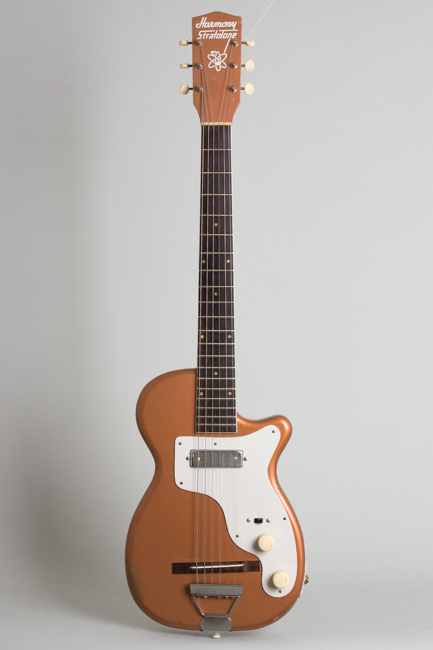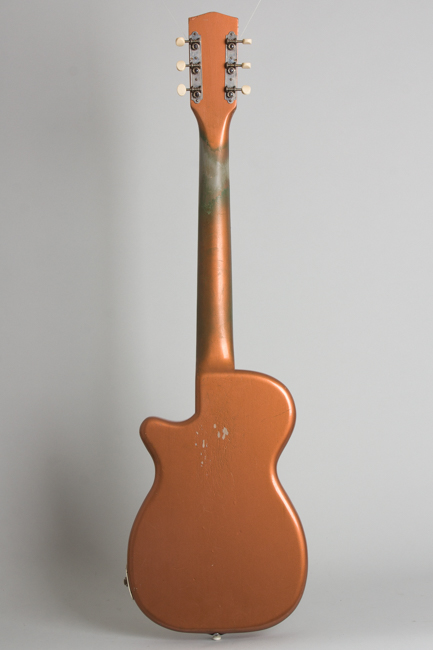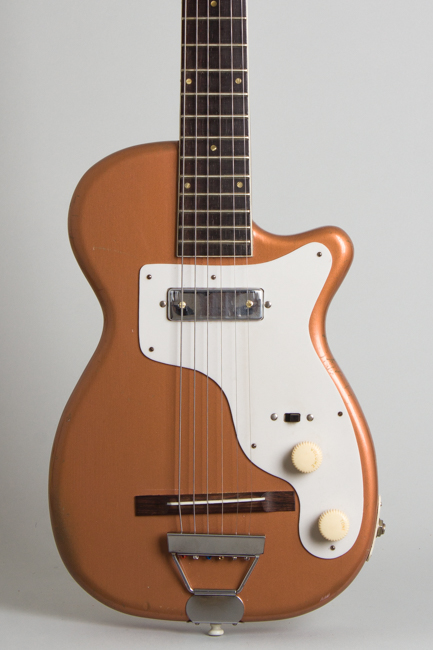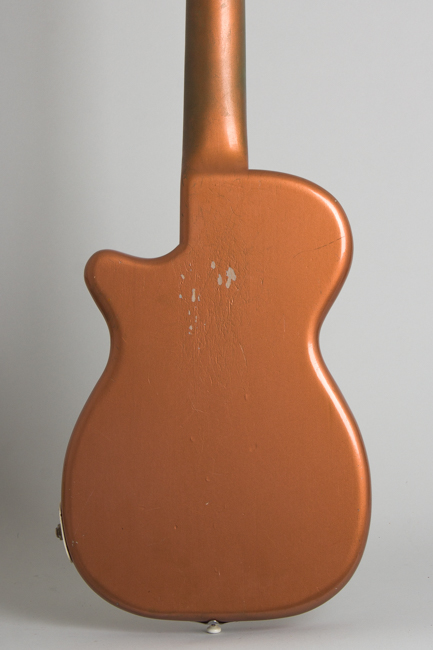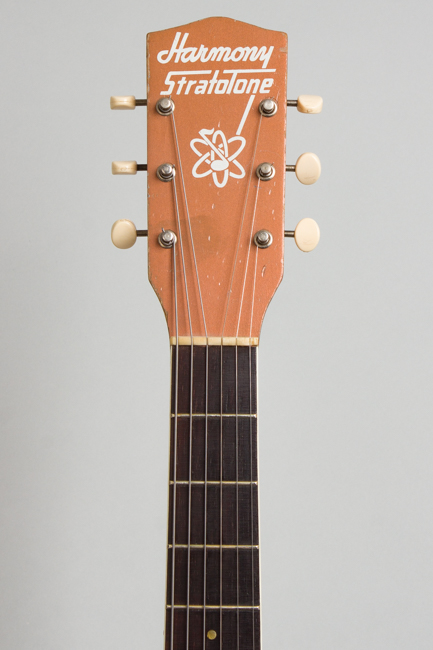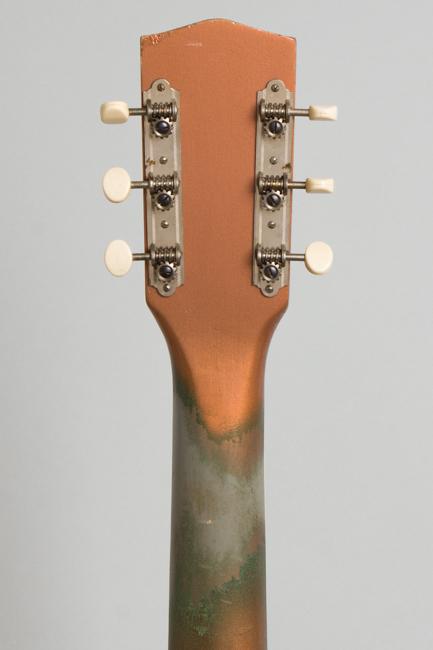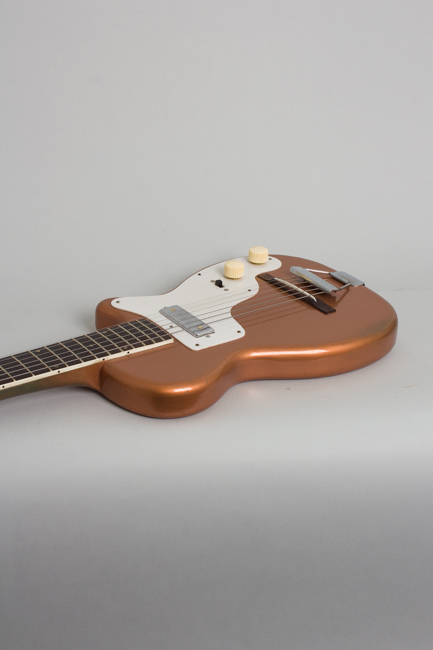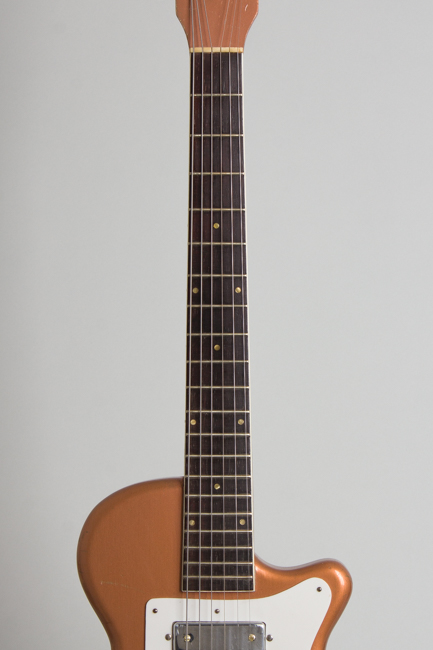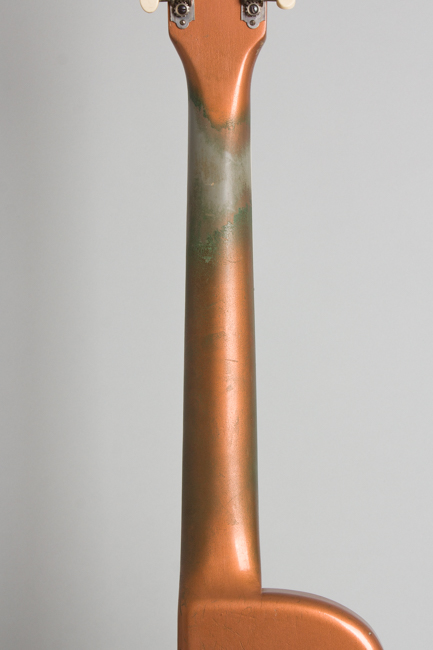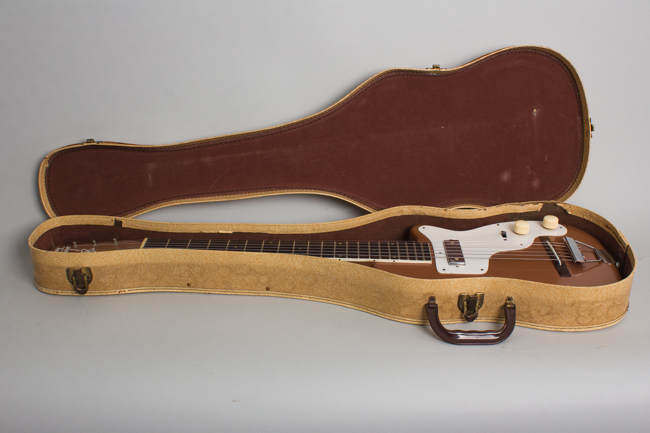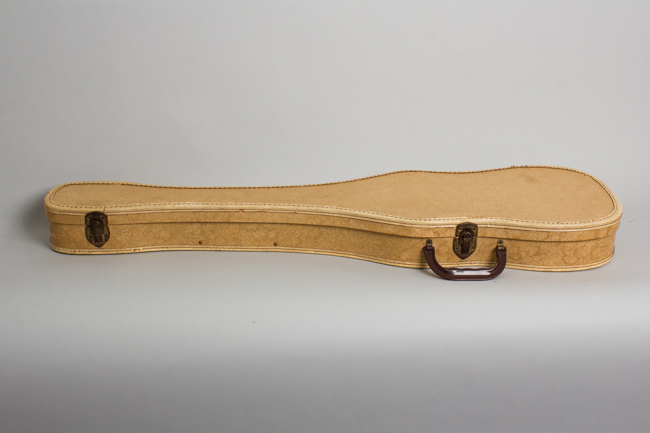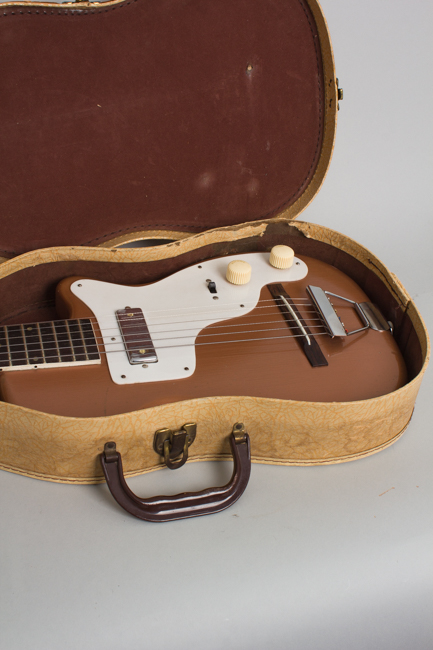Harmony H-44 Stratotone Solid Body Electric Guitar (1956)
This item has been sold.
Item # 13299
Prices subject to change without notice.
Harmony H-44 Stratotone Model Solid Body Electric Guitar (1956), made in Chicago, copper lacquer finish, hardwood body and neck, rosewood fingerboard, original tan chipboard case.
Overall length is 36 7/16 in. (92.5 cm.), 10 3/4 in. (27.3 cm.) wide at lower bout, and 1 3/4 in. (4.4 cm.) in depth, measured at side of rim. Scale length is 25 in. (635 mm.). Width of nut is 1 3/4 in. (44 mm.).
This is a "Lightly Relic'ed" but nicely original example of Harmony's primal slab-O-wood solidbody, the H-44 Stratotone. These appeared in the early 1950s soon after the Fender Telecaster and Gibson Les Paul launched the solidbody concept. Harmony was one of the first to jump on the bandwagon and the H-44 was their first solid offering, a small handy design built around a solid wood center and diminutive body. This guitar's original electronics rig is intact with pots dated the 20 week of 1956, so this guitar was likely assembled and sold later that year. The neck seems slightly less huge than some, but still a handful!
The copper metallic lacquer finish is better preserved than many examples, and does not appear to have faded too much. Overall it shows light play wear with dings, chips, and scrapes, most notably to a section of the back. The back of the neck has a section down to the undercoat in the lower positions and discoloration along most of its length, typical of these as the metallic overcoat usually wears quickly from contact with the hand. A few areas on edges of the body are lightly discolored a bit from arm contact, but not worn through to the primer.
This guitar remains all original except the single-layer plastic jackplate is a properly shaped repro; nearly all of the flimsy originals cracked to pieces long ago. The similarly fragile plastic pickguard is intact with no cracks at the screws. Most of the hardware is relatively clean; the rivets securing the pickup have been filed down a bit on the top surface, presumably as they were hitting the E strings. The Waverly strip tuners are original; they show a couple of spots of corrosion but still work as well as they ever did.
The neck is straighter than most of these, the original frets have been crowned a bit and this guitar plays quite well, at least by H-44 standards. This is a great-sounding early example of this super cool, funky, and now much sought-after first-generation solidbody guitar, still in the original tan chipboard case. Overall Very Good + Condition.
Overall length is 36 7/16 in. (92.5 cm.), 10 3/4 in. (27.3 cm.) wide at lower bout, and 1 3/4 in. (4.4 cm.) in depth, measured at side of rim. Scale length is 25 in. (635 mm.). Width of nut is 1 3/4 in. (44 mm.).
This is a "Lightly Relic'ed" but nicely original example of Harmony's primal slab-O-wood solidbody, the H-44 Stratotone. These appeared in the early 1950s soon after the Fender Telecaster and Gibson Les Paul launched the solidbody concept. Harmony was one of the first to jump on the bandwagon and the H-44 was their first solid offering, a small handy design built around a solid wood center and diminutive body. This guitar's original electronics rig is intact with pots dated the 20 week of 1956, so this guitar was likely assembled and sold later that year. The neck seems slightly less huge than some, but still a handful!
The copper metallic lacquer finish is better preserved than many examples, and does not appear to have faded too much. Overall it shows light play wear with dings, chips, and scrapes, most notably to a section of the back. The back of the neck has a section down to the undercoat in the lower positions and discoloration along most of its length, typical of these as the metallic overcoat usually wears quickly from contact with the hand. A few areas on edges of the body are lightly discolored a bit from arm contact, but not worn through to the primer.
This guitar remains all original except the single-layer plastic jackplate is a properly shaped repro; nearly all of the flimsy originals cracked to pieces long ago. The similarly fragile plastic pickguard is intact with no cracks at the screws. Most of the hardware is relatively clean; the rivets securing the pickup have been filed down a bit on the top surface, presumably as they were hitting the E strings. The Waverly strip tuners are original; they show a couple of spots of corrosion but still work as well as they ever did.
The neck is straighter than most of these, the original frets have been crowned a bit and this guitar plays quite well, at least by H-44 standards. This is a great-sounding early example of this super cool, funky, and now much sought-after first-generation solidbody guitar, still in the original tan chipboard case. Overall Very Good + Condition.
